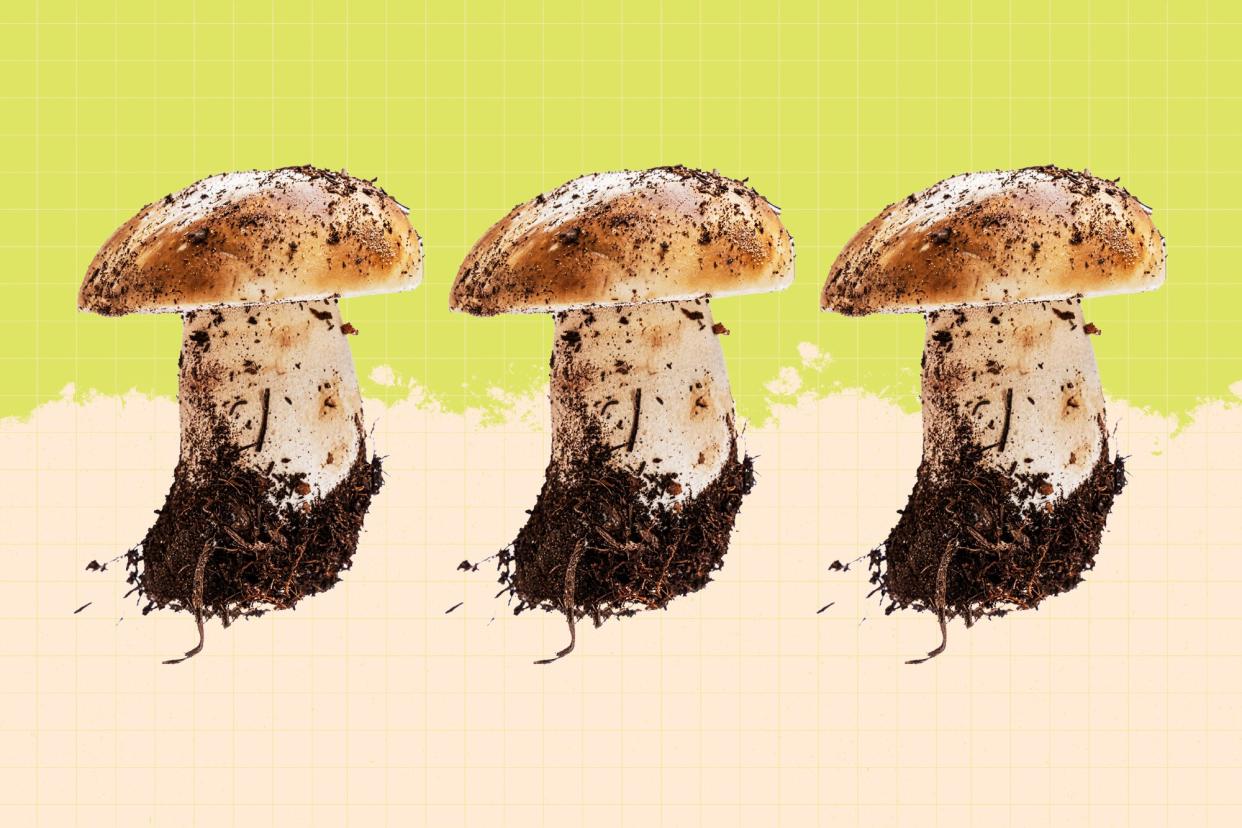What Is Mushroom Composting—and How It Can Help the Soil in Your Garden

Getty Images / Natalya Danko / AdShooter
Composting first got popular among home gardeners in the 1970s, but it has seen a resurgence in the last decade or so. "As people are becoming more educated about food waste, they're realizing that home composting is the easiest way to not only prevent kitchen scraps and yard waste from going into landfills, but to make soil that grows healthier food," says Brian Schneider, founder and owner of BCS Compost in Warminster, Pennsylvania.
Typically, Schneider says, compost is made when organic materials—leaves, potato peels, kale stems—decompose into a rich, dark, nutrient-dense soil known as humus. This process occurs naturally, but it can be sped along with the right combination of carbon- and nitrogen-based materials and proper moisture and aeration.
Compost is great for adding back nutrients that were leached away from the soil by whatever grew there, or were washed away by erosion. "You generally want to return nutrients to your soil at least yearly," Schneider says. But, he adds, "There's a big difference between dirt and healthy soil that promotes growth." Many home gardeners swear by compost, and specifically mushroom compost, as the best kind of growth medium for a garden.
Related: The 5 Best Compost Bins That Won't Make Your Kitchen Smell
What Is Mushroom Compost, Exactly?
Mushroom compost isn't actually made by tossing fungi onto the compost pile, but rather starts with the dirt the mushrooms grew on, which retains certain nutrients after the mushrooms have been harvested. "The final byproduct of mushroom growing, mushroom compost, has been shown in many studies to have fabulous properties for gardening, landscaping, soil amending, toxic waste mitigation, insulation, green roof formulations and more," says Rachel Roberts, president of the American Mushroom Institute in Avondale, Pennsylvania.
Making mushroom compost is a bit more involved than other kinds of compost, and doesn't really lend itself to DIY for most homeowners. Even if you could source the dirt from a local mushroom grower, the compost has to be pasteurized to ensure that the compost is free of pests and weed seeds, and then aged, like wine. "Unless it is aged, mushroom compost contains a level of salts and organic material that can impact your garden, especially varieties such as azaleas, rhododendrons and camellias," says Roberts.
Luckily, it's not hard to find mushroom compost at your local nursery that already meets these criteria. The extra time and effort that goes into mushroom compost (including aging—mushroom compost takes about two years to make, compared to three to four months for regular compost) does show in a slightly higher price tag, but fans say the payoff in a thriving garden is well worth it. "Mushroom compost applied or incorporated into soil is a regenerative product and has many benefits," says Roberts. Among them, she says: It improves soil structure, provides nutrients for plants and increases nutrient availability, helps with soil aeration and reducing compaction, and increases the population of healthy microbial populations in the soil.
- 6.99 Available at Ace Hardware
- 5.48 BUY IT
- 6.99 Available at Ace Hardware
How to Use Mushroom Compost in Your Garden
For flower and vegetable gardens, Roberts says, you can top-dress with the compost or till in about 3 inches of mushroom compost into the top 6 inches of your garden's soil. Mushroom compost can also be used for container plants and flowers, but add no more than a quarter of the total volume of the pot. Add mushroom compost to your garden beds in the spring, and you should be seeing results by harvest time.

